- 科目一考试
- 顺序练习
- 随机练习
- 强化练习
- 模拟考试
- 科目四考试
- 顺序练习
- 随机练习
- 强化练习
- 模拟考试
- 外国语言版题库
- 英语题库
- 德语题库
- 韩语题库
- 日语题库
- 俄语题库
- 法语题库
- 西班牙语题库
- 阿拉伯语题库
- 摩托车英文题
贵州科目四英文版
-
1、The sign on the right warns of a village 200 meters ahead.

Answer:Y
2、The motor vehicle equipped with ABS may sideslip during an emergency brake.
Answer:Y
3、When evading an emergency, except for being calm what principle should be held by drivers?
A、Evading people first and then objects
B、Evading objects first and then vehicles
C、Evading vehicles first and then people
D、Evading objects first and then people
Answer:A
4、The sign on the left indicates that drivers should stop to take a pass card at the toll station ahead.

Answer:Y
5、When the tire pressure is too low, what can happen when driving at a high speed?
A、Tire pressure will be unstable
B、Tire pressure will increase
C、Driving resistance will decrease
D、The tire will burst
Answer:D
6、At this intersection, motor vehicle drivers may directly make a U-turn along the U-turn turning lane.

Answer:N
7、The guide arrow on the road surface of this lane indicates that there is an intersection on the right side of the road.

Answer:N
8、When encountering an obstacle on one side of the road, what should vehicles do as they approach each other?
A、The vehicle not encountering an obstacle should Yield to the other vehicle
B、The slower vehicle should yield to the faster
C、The vehicle encountering an obstacle should yield to the other vehicle
D、The faster vehicle should yield to the slower
Answer:C
9、The guide line of a changeable lane indicates that drivers can choose their direction at will.

Answer:N
10、Motor vehicles should accelerate when driving into an intersection with this traffic signal.

Answer:N
11、This sign warns that the section ahead is under traffic monitoring.

Answer:Y
12、Under such circumstances, what should the motor venicle driver do?

A、Reduce speed and yield by the left side
B、Reduce speed and yield by the right side
C、Speed up and yield by the left side
D、Go ahead along the original route
Answer:A
13、What is the function of ABS during emergency braking?
A、Shortening the braking distance
B、Keeping steering capacity of the motor vehicle
C、Relief the braking inertia
D、Controlling directions automatically
Answer:B
14、One day, Mr. Yang drove a large bus with 57 passengers(bus capacity 55 people)from 7 pm to 1 am the following morning. At the spot of 3008 kilometers mark by 110 meters on the No. 050 National Road in Jin Chengjiang District, the bus had a malignant traffic accident caused by front left tire burst, killing12 people and injuring 22. What's the main illegal act committed by Mr Yang?
A、Fatigued driving
B、Carrying more passengers than permitted
C、Speeding
D、Misoperation
Answer:AB
15、As shown in the flash, what should the driver do when the motor vehicle encounters this situation?

A、Speed up and pass rapidl
B、Stop immediately
C、Sound the horn to indicate the pedestrians to yield
D、Observe the movement of pedestrians and non-motor vehicles before passing
Answer:D
16、What's the main impact of foggy weather on safe driving?
A、Easy to slide sideways
B、Low visibility
C、Increase the resistance
D、Widen the field of vision
Answer:B
17、Drivers may go ahead when traffic polices posture is like this.

Answer:Y
18、The road marker indicates that vehicles are not allowed to make a U-turn at the intersection ahead.
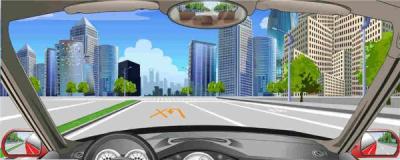
Answer:Y
19、The sign on the right indicates that no restriction for temporary parking.

Answer:N
20、Mr. Wu drove a large bus with 33 passengers (capacity 22 people). At the spot of 7 kilometers mark by 300 meters on the No 163 County Road, the bus lost control and fell into a ravine. As a result of the accident, 10 people were killed and 21 injured. In accordance with the alcohol test after the accident the blood alcohol content of Mr Wu was 26 milligram per milliliter. What's the main illegal act committed by Mr Wu?
A、Speeding
B、Carrying more passengers than permitted
C、Fatigued driving
D、Driving after drinking
Answer:BD
21、The sign in front indicates a one-kilometer distance from the highway entry.
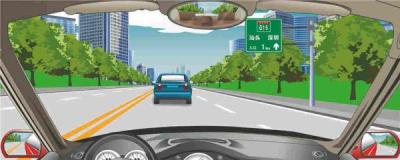
Answer:Y
22、Under such circumstances, motor vehicles are allowed to cross the central solid line to overtake.

Answer:N
23、In the flash, it is correct for the driver to behave this way when there is a traffic jam caused by an accident on the expressway.?
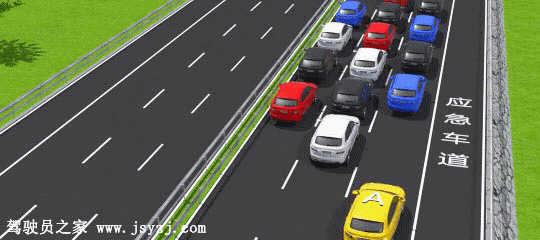
Answer:N
24、When the motor vehicle encounters a crosswalk in this situation, the driver may speed up and pass rapidly.

Answer:N
25、As shown in this flash, what should the motor vehicle driver do when encounters this situation?

A、Use the mergency brake
B、Turn sharply and pass rapidly
C、Slide over rapidly without encountering collision
D、Stop smoothly
Answer:D
26、Before making a U-turn at the intersection ahead, motor vehicle drivers should drive to the lane for turning left and going straight.

Answer:N
27、Motor vehicles are prohibited from stopping on the ramp of an expressway.
Answer:Y
28、When driving on this section of the road, drivers should observe closely and prepare to yield to the animals crossing the road.

Answer:Y
29、When a motor vehicle encounters thick fog on an expressway and the visibility is poor, the driver should immediately brake and stop.
Answer:N
30、The marking on the road surface indicates that the speed limit of this road section is 50 km/hour.

Answer:Y
31、When driving in a residential area, the driver should not exceed the speed indicated by the speed limit sign.

Answer:Y
32、The sign in front gives information about the direction of road exits.

Answer:Y
33、The sign on the right warns for disabled people ahead.
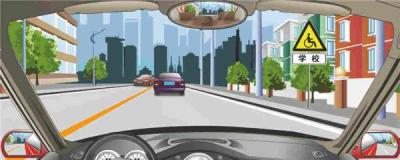
Answer:Y
34、When seeing this sign, the driver should slow down promptly.

Answer:Y
35、What should be done by drivers in order to drive safely on the road in this condition?

A、Make a large turn on the left side of the road
B、Make a turn on the central line of the curve
C、Make a small turn on the right side of the road
D、Make a turn by borrowing the opposite lane
Answer:C
36、What should the driver do upon seeing this sign?

A、Slow down, look and pass slowly
B、Sound the horn to drive them away
C、Go through from the spaces between animals
D、Drive slowly and drive them away from the motor venicle
Answer:A
37、Under such circumstances, what should motor vehicle drivers do?

A、Overtake the vehicle quickly on its left
B、Keep a long braking space
C、Continuously sound the horn to alert the vehicle in front
D、Overtake the vehicle quickly from its right
Answer:B
38、When rescuing a wounded person suffering from spinal fracture, which of the following measuresshould be taken?
A、Prevent heat loss
B、Rescue the wounded person with a soft stretcher
C、Keep the wounded part in position with a sling
D、Help the wounded person when walking
Answer:C
39、How to pass the intersection when running straight

A、turn on the hazard lights and pass
B、directly speed up and pass straight
C、yield to the vehicle from the right road
D、yield to the vehicle from the left road
Answer:C
40、When encountering this situation around a school, the driver should speed up and pass as quickly as possible.

Answer:N
41、This sign warns to bypass from the left side to avoid the roadblock.

Answer:N
42、The sign on the left indicates no U-turn at the intersection ahead.
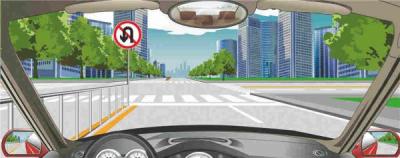
Answer:Y
43、When a motor vehicle breaks down on an expressway and cannot be moved away from the driving lane, the driver may conduct emergency repairs on the driving lane.
Answer:N
44、If a motor vehicle is unable to drive in heavy fog on an expressway due to an accident, what should the driver do?
A、The driver and all passengers should promptly get off the motor vehicle from the left side door
B、Set up a warning sign 100 meters behind the vehicle in the oncoming direction
C、Turn on the hazard lamp and the high-beam
D、Stand in a safe place outside the guardrail
Answer:D
45、The guide arrow on the road surface of this lane indicates that the lanes ahead will merge to the left side.

Answer:Y
46、When the vehicle engine catches fire, what should the driver do first?
A、Turn off the engine as soon as possible
B、Extinguish the fire with water
C、Open the hood to extinguish the fire
D、Extinguish the fire from the leeward direction
Answer:A
47、The sign on the right warns of traffic signals ahead.

Answer:Y
48、How should lamps be used when motor vehicle drivers pass through a two-way tunnel?
A、Turn on the hazard lamps
B、Turn on the high-beam
C、Turn on the fog lamp
D、Turn on the low-beam
Answer:D
49、The sign on the right warns for children on the section ahead.

Answer:Y
50、When driving onto the left lane, motor vehicle drivers are allowed to make a U-turn.

Answer:Y
- 贵州科目四英文版 相关内容
- 江西科目四考试英文版 山西驾校一点科目一英文版 青海科目一有英文版吗 china driving test 4 北京驾考有英文版吗 山东科目四英文版题目 北京关于考驾照的英语 西藏驾考科目四英语 河南只认识英文可以考科目一吗 广东2025科目四英文版 辽宁2025驾考英文题库 安徽驾照考试科目一英文版 吉林英文考驾照用语 江苏驾考科目一英语版PDF题库 云南驾考有英文版吗 广西外国人考科目一 英文
Copyright © 2025 驾考 版权所有
